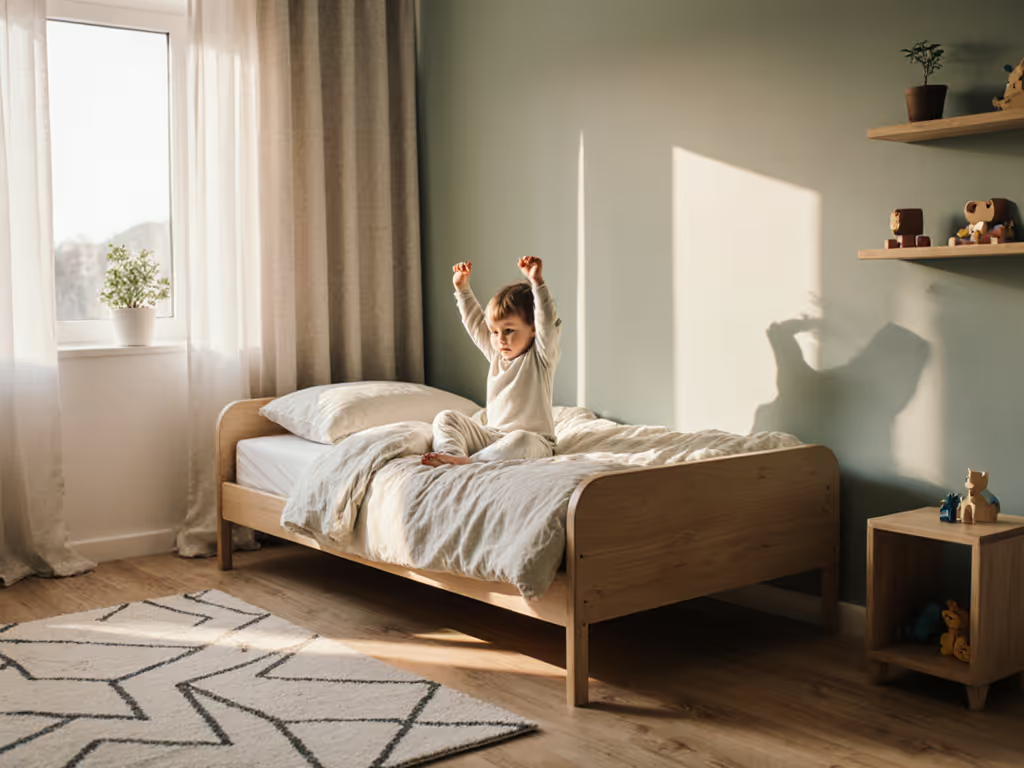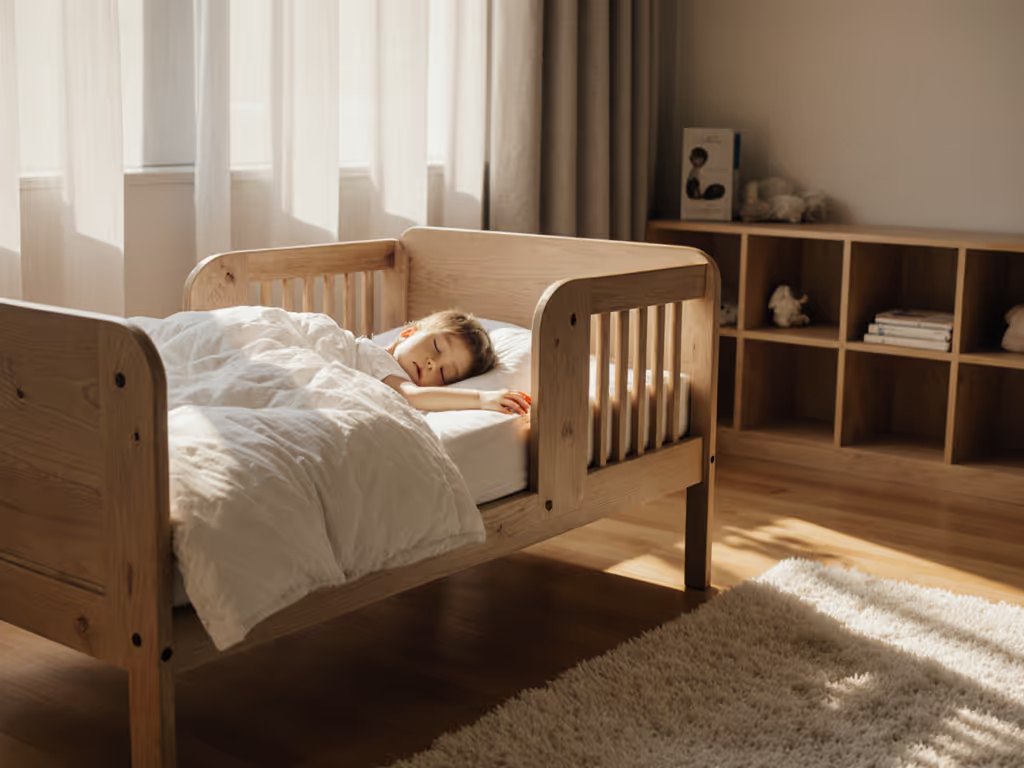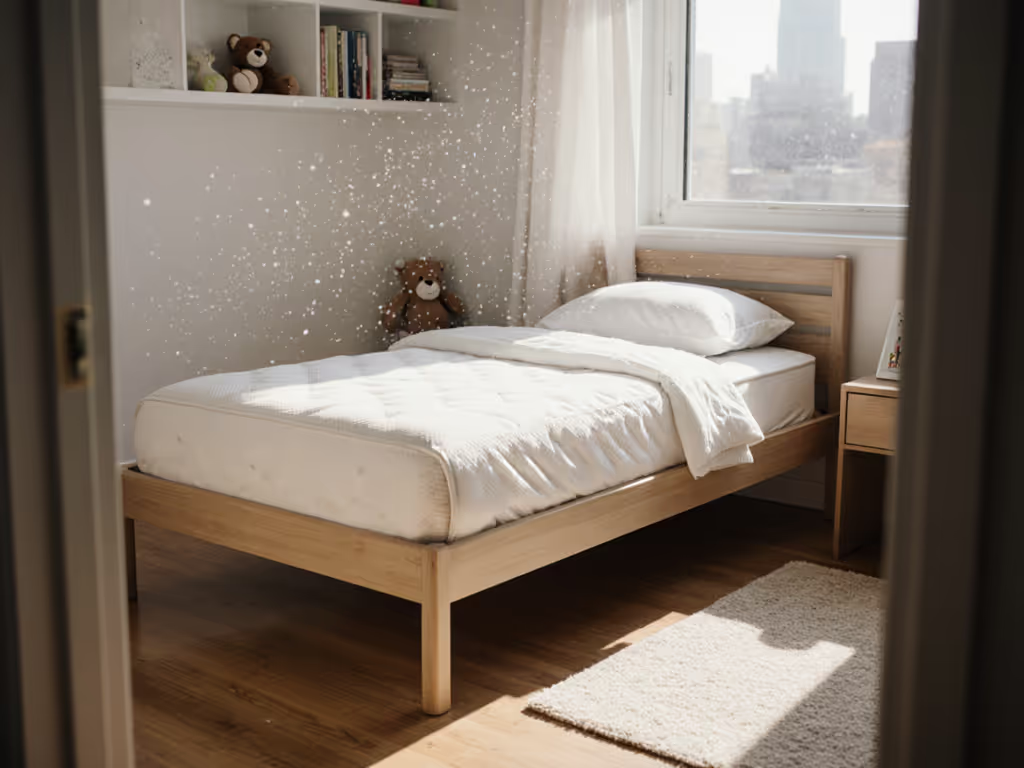
Low Montessori Bed: Independence Without Falls
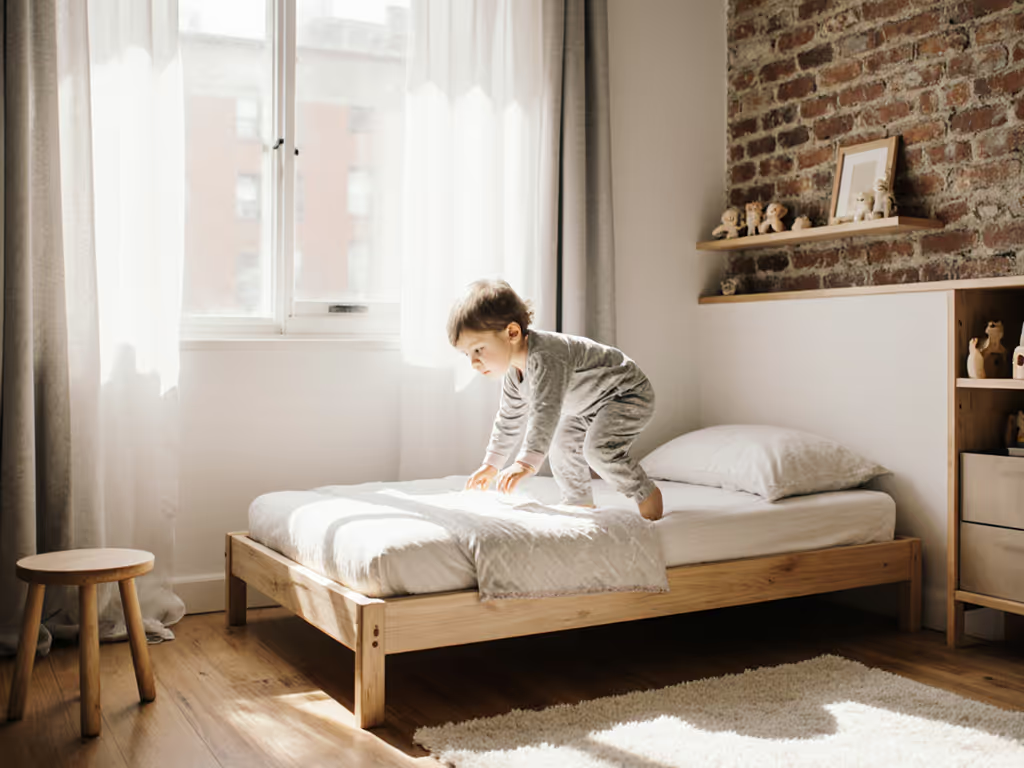
When you're navigating bedtime in compact living spaces, a montessori bed becomes more than furniture (it is your secret ally). The right low profile bed transforms cramped quarters into peaceful zones where toddlers move with purpose, not panic. No more wrestling over high railings or rearranging entire rooms to squeeze in bulky furniture. Instead, you create space where your child's growing autonomy actually saves you time and tension. This isn't just about sleep, it is about reclaiming your evenings through thoughtful spatial choices.
The Space Crunch That Steals Your Evenings
We've all been there: standing in a 10x10 foot room wondering how to fit a toddler bed, dresser, and play area without blocking the closet. When your child outgrows their crib but your space can't accommodate standard toddler furniture, bedtime becomes a negotiation nobody wins. You're stuck between:
- Safety fears: "Will they roll out of a standard bed during those restless first nights?"
- Space anxiety: "This bed corners us out of half the room, how will we even open the closet door?"
- Independence paradox: "We want them to feel capable, but every step toward self-sufficiency feels like a safety gamble."
The constant vigilance wears you down. For essential fall-prevention guidance, see our 5-inch guardrail rule. You're measuring clearance in inches, counting sleepless nights, and second-guessing every furnishing choice. And let's be honest, the emotional toll of nightly battles hits harder when you're living elbow-to-elbow in a city apartment or converted home office.
Why Low Is the New Safe
Here's what shifted for us: simple access invites cooperation. When we stopped fighting gravity and started working with it, everything changed. Our toddler needed a montessori bed they could navigate independently, not because we wanted to hand off responsibility, but because the right height created natural safety. If you're still gauging timing, review the toddler bed readiness signs.
A floor bed isn't just low, it is thoughtfully positioned to eliminate the fall distance that keeps parents awake. When your child's sleep space sits mere inches off the ground, "falling out" becomes a non-issue because there's nowhere to fall from.
Child independence beds succeed when they meet three criteria:
- True low profile: Mattress height at or below 8 inches (measured from floor to sleeping surface)
- Reachable boundaries: Simple guardrails that are climbable up but not over
- Clear pathways: Furniture that leaves at least 18 inches of space around all sides for safe movement
This isn't theoretical. One Chicago parent converted their second bedroom (8x9 feet) using a properly scaled montessori bed arrangement. The result? Room for twin sleep zones plus a compact dresser, all while maintaining closet access. No more stepping over bed rails to change sheets or rearranging furniture for laundry day.
Creating Your Calm Independence Zone (Step-by-Step)
Step 1: Measure Twice, Buy Once
Grab your tape measure before shopping. In small spaces, every inch matters more than aesthetics. Key measurements:
- Room circumference: Subtract 24 inches from each wall dimension (for safe movement)
- Door swing clearance: Ensure beds won't block entry during sleep transitions
- Mattress fit: Verify your existing crib mattress (standard 28x52 inches) works with the frame
The Graco Benton 5-in-1 Convertible Crib when used as a toddler bed creates a perfect low-profile foundation that meets these spatial needs. For more compact picks tailored to tight rooms, browse our space-saving toddler beds. Its minimalist frame and low height make it ideal for urban living where space is precious.
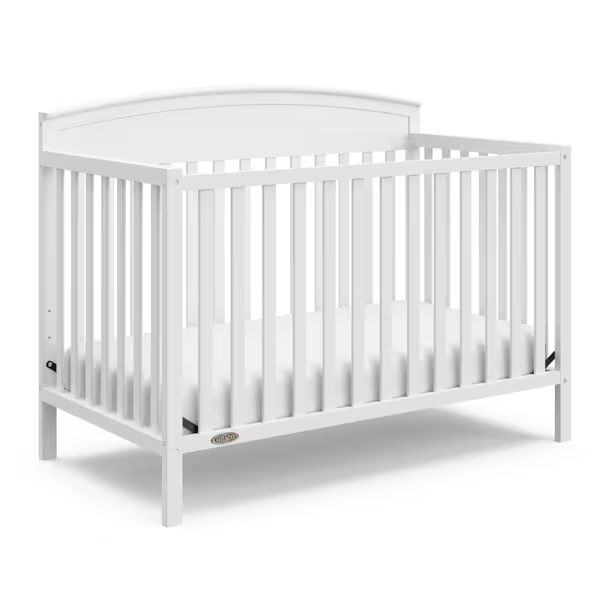
Graco Benton 5-in-1 Convertible Crib
Step 2: Build Gentle Transitions
Children thrive on predictable cues. To reinforce these cues, build an evidence-based bedtime routine. Place a small rug beside the bed to mark "safe landing" territory, this subtle boundary works better than verbal reminders. Pair it with:
- A reachable basket for pajamas (no more "I can't find my clothes" protests)
- A low bookshelf with 3-4 bedtime stories within grasp
- A dimmable lamp on the floor rather than a nightstand
This self-serve setup transforms resistance into routine. Your toddler engages with the space instead of fighting it.
Step 3: Safety-Proof the Journey
True floor beds for toddlers require room-wide preparation, not just bed modifications. Use our toddler bedroom childproofing checklist to secure furniture, cords, and hazards. In apartments with hard surfaces, lay interlocking foam tiles extending 36 inches around the bed. Secure furniture to walls (especially in earthquake zones), then:
- Place nightlights at floor level to illuminate pathways
- Store shoes and toys in lidded bins under the bed
- Keep one bedside clear for easy parent access
You're not removing safety, you're redistributing it thoughtfully throughout the space.
The Ripple Effect of Room Design
What surprised us most wasn't just the end of bedtime battles, it was how one change improved everything. When our daughter could see her whole room from her montessori bed, she started anticipating transitions. "Time for jammies" became her initiative, not ours. The wind-down corner we created with a floor cushion and soft lighting became her self-regulation zone.
This is where environment teaches behavior most profoundly. Your spatial choices whisper important lessons all day long: "You're capable," "Your choices matter," "This space belongs to you too." In cramped living situations, these messages become lifelines.
Your First Step Tonight
Don't overhaul everything at once. Before tomorrow's bedtime, implement one micro-change:
- Clear the path: Remove one obstacle between bed and bathroom (critical for potty-training nights)
- Lower one item: Place shoes or pajamas on the lowest dresser shelf
- Add one cue: Position a small rug beside the bed as a visual "landing zone"
These tiny shifts create immediate cooperation. You'll notice fewer protests as your child engages with an environment designed for their scale, not just yours.
Small changes in space, big changes in sleep. Start where you are, with the room you have and the child in front of you. Before long, you'll find those peaceful evenings aren't a luxury reserved for big houses. They're built, inch by thoughtful inch, into your compact reality.


